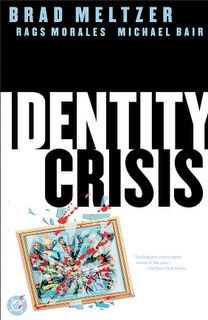Identity Crisis was not always supposed to be the start of the countdown to Infinite Crisis, as author Brad Meltzer recalls in a recent interview conducted to coincide with the hardcover release of the controversial seven-part story where the JLA reveals a secret past.
"When I started Identity Crisis, it was supposed to be a small, emotional story. That's it," Meltzer says. "Those were literally the words they said to me. And the key word (was) small."References to the events of Identity Crisis were reflected in most DCU titles, and dealt with directly in Flash and JLA, both of which were written by Infinite Crisis writer Geoff Johns (JLA was co-written by OC scribe Allan Heinberg).
It wasn't until Meltzer was done writing the story and shared the scripts with DC Vice President/Executive Editor Dan DiDio and Infinite Crisis writer Geoff Johns that Identity Crisis became part of a much larger storyline. Meltzer recalls how excited DiDio was when he read the scripts, and how eager he was to use various elements-- the JLA's decision to erase Batman's memories, the resurgence of certain villains-- in the other titles.
Some of the books directly setting up Infinite Crisis also reference those events, such as the 80-page Countdown to Infinite Crisis, the mini-series The OMAC Project (revealing the depth of Batman's paranoia, more relevant now that we know the reason for it) and Villains United, which reveals the super-villain community organizing for protection now the the JLA's secret of mind-wiping villains has been revealed). Even Days of Vengeance, the magic-based mini-series, has the mystery killer from Identity Crisis as the catalyst of that story.
But Meltzer notes one important thing in his interview that sets his book apart from what has come since -- it's the only story that's completely self-contained. I don't completely agree with that.
While the mystery from issue 1 is resolved by the end, there are several plot points that are NOT wrapped up in the book, most notably, how much do Batman and Superman now know about the JLA's secret and who is Captain Boomerang's son's mother? The answers are revealed, but not within the pages of Identity Crisis. You have to read subsequent issues of Batman, Adventures of Superman, JLA and Flash to learn those answers (and I haven't read all of them yet myself).
That said, however, Identity Crisis is a great read for DC superhero fans and worth the $25 price tag for the hardcover (a cheaper softcover version is likely at least a year away). In additon to great art by penciller Rags Morales and inker Michael Bair, it offers mysteries, secrets and a look at super-heroes' real weaknesses. And it ain't kryptonite.

No comments:
Post a Comment